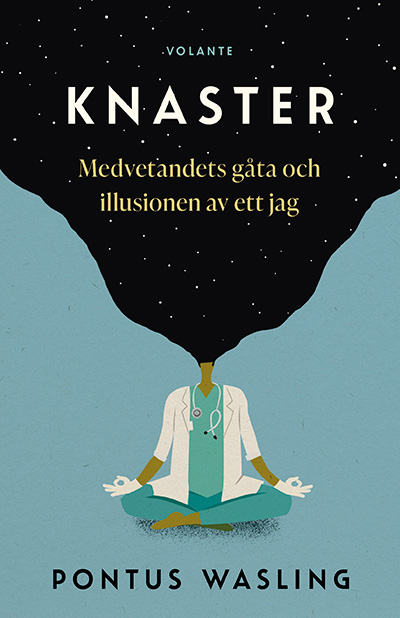Knaster’s book is an exciting collection of essay-like chapters on the subject of consciousness, sleep, dreams, and the human spirit. Pontus Wasling, who previously published the volume “Minnet – forward and backward”, is a Gothenburg neurologist and associate professor with a research background in both neurophysiology and clinical neuroscience. Wasling also studied philosophy and cited philosophy professor Helge Malmgren as one of the inspirations for his book. Another model is Oliver Sachs, and in its design the book reminds us of the writings of this American, above all by its interesting patient case accounts. This includes descriptions of people with REM sleep disorders such as narcolepsy, with a vegetative state, with a dual personality, “split brain”, functional syndromes, face blindness and epilepsy. The descriptions of patients’ cases are thought-provoking but perhaps somewhat exhaustive, highlighting the difficulty as a clinician in describing clinical cases in such a way as to make the descriptions accessible to non-physicians.
In addition to the experience gained from the clinic and related neurophysiology research, Knaster’s starting point is above all the author’s research outside the furrow of traditional research. Wasling appears in the book as his own object of research: through various types of meditation, such as in a floating tank, or through a trip on the drum with a shaman. He is interested in other people’s experiences from “trekking” with hallucinogens such as LSD and peyote, with or without the Master’s guidance. He visits Free Church churches to witness speaking in tongues and spiritual ecstasy. Own experiences/observations are woven into a summary of knowledge old and new in both medicine and philosophy. He does this in a particularly inspiring way.
It’s a very personal book. The author is not afraid to describe his neurotic search for consciousness and the soul, which necessarily leads to revealing his position on issues of life perspective and religious belief. Both the wife and children are involved in the text, for example when the author experiments with the “rubber hand” dealing with sensual fantasies – very entertaining!
It’s also a funny book in places, like when the author describes teasing a neurologist before a zombie-level diagnosis. Metaphors take turns and highlight drier fact-based language: neurotransmitters become “super celebrities” and “favorites.”
It’s gratifying that Wasling brings up the idea of ”minimum consciousness,” a concept that should be more prevalent in the medical profession. The author describes a ‘PET paradigm’ of mental tennis games versus house walks – a fascinating opportunity to examine potential residual consciousness in an unconscious person, with potential implications for the way we assess patients in daily clinical practice. It is also significant that the author describes “neuro-racism”, i.e. the increased ability to visually identify individuals within one’s ethnic group – a difficult topic that probably deserves more attention in working against it. racism.
Looking into the future, AI is presented as an opportunity to take on the challenge of deciphering the background of our consciousness, and the author clarifies the current question of whether consciousness/soul is intended for Homo sapiens or whether it could arise elsewhere.
Even if the medical terms are translated into their Swedish equivalents, for example “girdelvindlingen” for “gyrus cinguli”, the scientific background is so complex that it presents difficulties to read the book without a certain scientific background or at least a strong interest. It may not reach the general public because the text is dense in some places and the subject matter is complex. Nevertheless, the book should be of great interest to clinicians both inside and outside the field of neuroscience.
Lakartidningen.se
(updated on 2022-05-17)

“Lifelong food practitioner. Zombie geek. Explorer. Reader. Subtly charming gamer. Entrepreneur. Devoted analyst.”







More Stories
England vs. Belgium 2024 live stream: How to watch live football for free
The Willy Wonka event was criticized as an epic letdown, compared to a meth lab
Taylor Swift's Tortured Poets section hits the top spot, breaking records as it goes